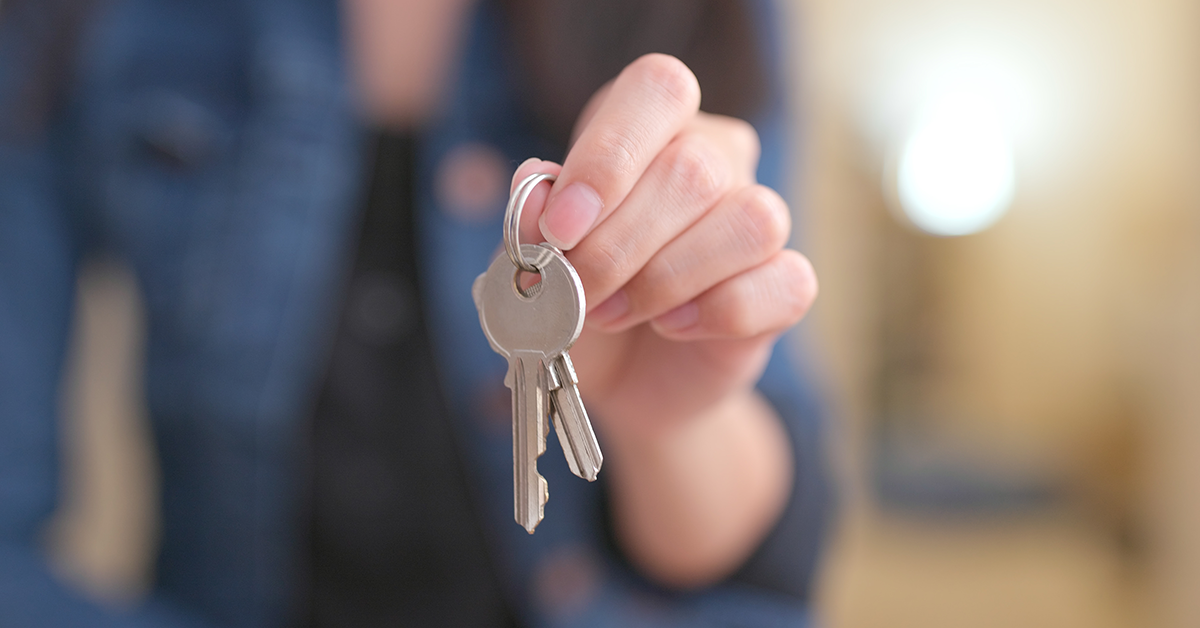Our 2025 Sustainability Report is here! Dive in.
The Keys to The Kingdom: 3 Best Practices for Engaging with Underserved Communities
August 14, 2023 •Angie Bivens

I grew up with the age-old notion that “your home should be your castle,” but in some communities, the quality of homes is less than a fairytale. As an Outreach Manager with Franklin Energy, I’m tasked with revisiting clients that participate in our programs. One of my most memorable visits was the mobile home of a woman we will call “Ms. Anne.” Ms. Anne is a spunky, elderly resident with mobility and health issues. She reached out to her local Habitat for Humanity because her home was rapidly declining and negatively affecting her health. As I walked through Ms. Anne’s home to follow up, she lit up as she showed me all the new upgrades she had received. After one initial intake visit, Habitat had led a coordinated effort of five programs that provided Ms. Anne with LED lighting, an Energy Star® fridge, a walk-in shower, an energy-efficient heating unit, and insulated mobile skirting installed on her home. Today, Ms. Anne is still telling her neighbors about the programs that helped her be more comfortable and save energy.
While the condition of Ms. Anne’s home is a common occurrence, finding assistance to help is not as easy for most residents. According to the federal government, around 30 percent of the U.S. population is identified as living in disadvantaged communities (DACs). These disadvantaged communities are defined as areas that suffer a combination of economic, health, and environmental burdens. These same communities are also often referred to as low- to moderate-income (LMI) because of the severe energy burden they face. Along with injecting more funds into programs such as LIHEAP and WAP, the federal government is implementing the Justice40 Initiative to purposefully ensure that ALL federal investments target and benefit these communities.
Historically, disadvantaged communities have lacked access to energy-efficient housing and transportation, while-1.png?width=400&height=195&name=Franklin%20Social%20Graphics%20(24)-1.png) facing underinvestment in clean energy infrastructure and being overburdened by pollution. Being subject to this environment has created a lack of trust among the community itself, utility providers, and government agencies. While programs and resources can serve as a vehicle to entrance, those resources may not open the “gate.” So, what will?
facing underinvestment in clean energy infrastructure and being overburdened by pollution. Being subject to this environment has created a lack of trust among the community itself, utility providers, and government agencies. While programs and resources can serve as a vehicle to entrance, those resources may not open the “gate.” So, what will?
Key Number 1
The first key to accessing these communities is finding your gatekeeper and establishing a meaningful relationship. Gatekeepers can be an individual or group and include community champions, legislative representatives, or long-time residents. Homeowners’ associations (HOAs), local community-based organizations (CBOs), advocacy groups, and community organizations also serve as advocates.
It is important to reiterate that a distinct barrier to accessing CBOs is trust. In Ms. Anne’s scenario, she was able to access the suite of programs available through a partnership with her local Habitat office. Because of the strength and longevity of Habitat in her community, Ms. Anne could trust in the services they offered, programs that she otherwise wouldn’t have access to or knowledge of. That type of trust is built through honest, intentional engagement, but can be broken through misinformation or dishonesty. One prime example is using the word “free” to engage participants. Often, the “free” service is something that is not needed and is considered a bait-and-switch tactic by the community, creating a hesitation and mistrust. This tactic should be avoided at all costs.
Key Number 2
The second key to accessing these communities is “Ask, Don’t Tell.” Too often, programs will make an offering to a community without cause or justification and then wonder why the program fails. Instead of presenting an offering that “checks the box,” the program should first survey the needs of the community and then make their involvement intentional and purposeful not only to the program but to the community served. Surveying can happen in various forms, including community conversations and focus groups. This is an opportunity to learn real needs and challenges and to build a relationship with the community. By aligning the program’s goals with the needs of the residents, you ensure the program’s success leads to the communities’ success. This approach is not only useful for the initial set-up of the program but should be a recurring process.
Key Number 3
The last key, and I believe the most impactful, is to educate and engage. A critical component of the Justice40 Initiative is community engagement. But this doesn’t just apply to this newly established funding; it also includes long-standing state programs as well as utility-offered programs. Engagement allows opportunities to educate the community about the long-lasting benefits of the program and again builds trust with the community. Franklin Energy has a track record of hosting outreach events like workshops to provide education and boost program awareness. Utilizing outreach workers that are directly from the disadvantaged community helps prevent language barriers and promotes workforce development.
The call for “Equity” at the federal level has been loud and clear since the rollout of Justice40 and the passage of both Bipartisan Infrastructure Law and Inflation Reduction Act; however, the states are struggling to define equity. Every state, every community is different, so there is no one-size-fits-all approach to equity. One thing is for certain: You cannot achieve equity without engaging those communities who have historically and systematically carried the weight of inequity on their shoulders. And light touches just won’t do. It requires meaningful communication resulting from fortified relationships. Anything less will result in being locked out of the gate.
Looking for a partner to help you get started? Contact us today.


